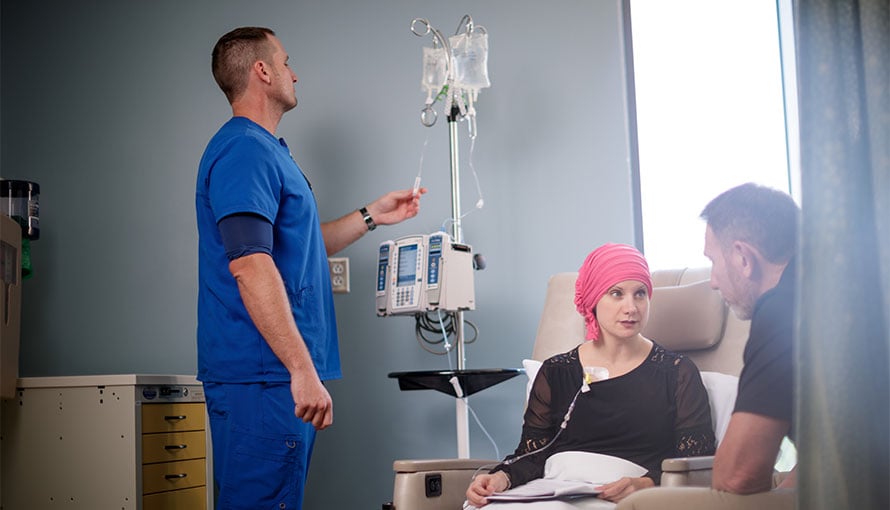Chemotherapy for Leukemia

Chemotherapy is often recommended for treating certain types of leukemia immediately after a diagnosis is confirmed. The treatment approach can vary based on the specific type of leukemia diagnosed. Generally speaking, there are four main types of leukemia: acute myeloid leukemia (AML), acute lymphoblastic leukemia, chronic myeloid leukemia and chronic lymphocytic leukemia. AML, the most common type, is usually addressed with chemotherapy because the cancer tends to progress very rapidly and the cancerous cells are often widespread through a patient’s body at the time of diagnosis. Chemotherapy for chronic lymphocytic leukemia (CML) may be used to help lower white blood cell counts and shrink an enlarged spleen, which often occurs with leukemia.
Chemotherapy for acute myeloid leukemia is usually administered in phases:
- Induction therapy – The goals of induction therapy are to destroy as many cancerous cells as possible, restore healthy blood cell counts to normal levels and induce remission so that no evidence of cancer remains. To achieve this, many patients receive a combination of anthracycline, doxorubicin and cytarabine, which is administered intravenously in several sessions over the course of four to six weeks. Some patients receive several rounds of induction therapy before reaching remission.
- Post-remission therapy – After the induction phase of treatment is complete and a patient’s leukemia is confirmed to be in remission, post-remission chemotherapy is used for reducing the likelihood of recurrence by destroying residual cancer cells that went undetected in blood and bone marrow tests. The treatment usually consists of four cycles of intensive chemotherapy that includes high doses of cytarabine and one or more other drugs
- Central nervous system (CNS) prophylaxis – CNS prophylaxis is sometimes recommended to prevent meningeal leukemia, which affects the covering of the brain and spinal cord (meninges). If necessary, a patient may receive intrathecal therapy, through which chemotherapy drugs, such as cytarabine and methotrexate, are injected into the spinal fluid.
- Maintenance – Patients with certain types of AML receive maintenance treatment consisting of low doses of chemotherapy administered over the course of several months or years.
Within Moffitt Cancer Center’s Malignant Hematology Program, our multispecialty team has extensive experience in working with patients who have been diagnosed with cancers affecting the bone marrow and blood cells. After confirming the type and stage of a patient’s leukemia, these knowledgeable experts can collaboratively determine the best course of chemotherapy or other treatment for him or her. Oftentimes, promising new treatment agents are available to patients through clinical trials at Moffitt long before those treatments are in widespread use. We are strongly committed to taking our research breakthroughs from bench to bedside as quickly as possible, and this is one way that we continually improve outcomes and enhance quality of life for our patients.
Medically reviewed by Bijal Sha, MD, Malignant Hematology.
Chemotherapy for leukemia is available at all Moffitt locations. If you’d like to learn more, we provide consultations with or without referrals. Call 1-888-663-3488 or complete a new patient registration form online.
